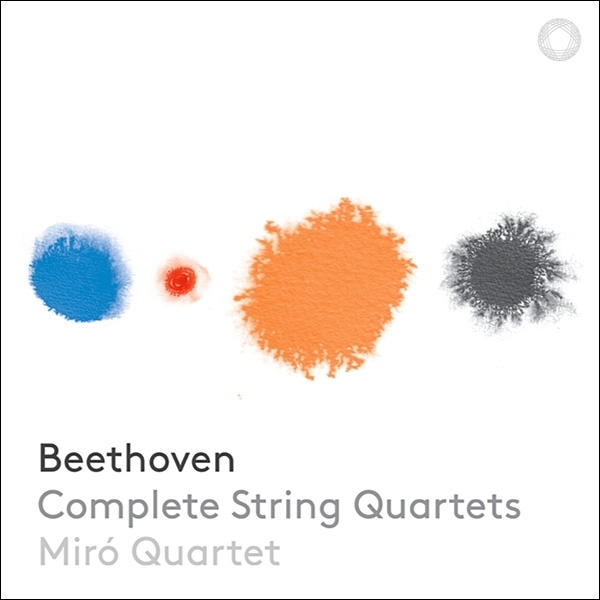

Press

By Andrew Farach-Colton for Gramophone
The Miró Quartet began their Beethoven cycle in 2004 with Op 18. I sat in on one of those recording dates for a Gramophone ‘session report’ (8/05) and witnessed first-hand the Miró’s unflagging attention to detail, aided by the keen ear of producer Da-Hong Seetoo (a Juilliard-trained violinist himself). Rob Cowan’s review (11/05) praised the quartet’s ‘consistently animated and imaginative’ approach, although he became bothered by their ‘tendency to insert tiny points of punctuation’. Revisiting those performances reissued here, I find myself very much in agreement. The way the Miró revel in the music’s daring without sacrificing any of its surface polish remains impressive. Their playing is always articulate and balanced with care, even when they opt for a breakneck tempo – try, say, the last movement of No 5, which in their hands becomes a grinning, giddy homage to the Jupiter Symphony’s finale. The aforementioned ‘punctuation’ tends to occur where Beethoven indicates a sudden change in dynamic; the Miró take a collective breath to underscore the change, and it does indeed become distracting.
RC’s summary judgement that the Miró’s playing ‘suggests huge potential’ and requires merely ‘a little time to settle’ also seems spot on. So, for example, those intrusive punctuation marks are entirely absent in the newer recordings, made between 2012 and 2019 (the cycle was recorded more or less chronologically by opus number). In the meantime, the quartet changed second violinists, with William Fedkenheuer replacing Sandy Yamamoto – and record labels (Op 18 was originally released by Vanguard Classics) – yet their style retains its distinctive blend of elegance and daring. As in the ‘early’ quartets, tempos in the middle-period works can be surprisingly brisk. The Allegro of Op 59 No 1 feels to me to be in two beats to a bar (cut time) rather than four to a bar (common time), as marked. Considering the composer’s bracing metronome markings for the symphonies, I’m sure a case could be made for similar swiftness in the string quartets, but the breathlessness does take some getting used to. I wonder, too, if it allows for true dolce playing where indicated – as in the magical shift from F major to D flat at 6'29" of that movement. Not all of the movements are so fleet, mind you, and in some the sense of haste is extremely effective. Take the Allegro of Op 59 No 2, where the Miró’s combination of urgency and hair-trigger responsiveness makes the music feel especially vertiginous. And even when a movement seems pushed to the brink, as in that same quartet’s galloping finale, the conviction of the playing is as astonishing as its sheer technical finesse.
Listening as the opus numbers ascend and the quartets gradually gather amplitude and expressive weight, I was struck by how persuasively the Miró are able to convey the sweep of a movement. This has less to do with tempo, I think, than with a clear understanding of how its myriad parts – both vertical and horizontal – fit into the whole. It’s readily apparent in a highly concentrated work such as Op 95, where the Miró’s intensity never overheats (I jotted the phrase ‘pale fire’, from Nabukov via Shakespeare, in my notes), but I think one feels it even in the gloriously expansive slow movements of Opp 131 and 132, as well as in the Grosse Fuge, although I do think the latter could benefit from a greater feeling of wild abandon. Other than that, however, and a slightly brittle reading of Op 130’s second finale, I find the ‘late’ quartets to be the glory of this cycle. The Adagio of Op 127, for instance, is sublime: intimate, vulnerable (I swoon at the way first violinist Daniel Ching feels his way so gingerly through the opening phrases), yet dignified, too. Op 135 is another marvel, from the quizzical, changeable opening Allegretto, rendered here with such unassuming confidence, to the finale’s joyful sense of acceptance and – more unexpectedly – gratitude.
At their best, which is a fair percentage of this handsomely recorded cycle, the Miró get to the very core of Beethoven’s art, and they do so by revealing the specific genius of each individual quartet. Despite my caveats, there’s so much profoundly satisfying music-making here that I can strongly recommend it to others who hold these works near to their hearts.